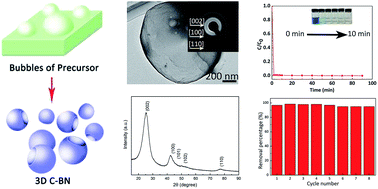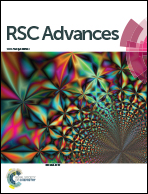Three-dimensional carbon boron nitrides with a broken, hollow, spherical shell for water treatment†
Abstract
Three-dimensional carbon boron nitrides (3D C-BN) with a unique morphology were fabricated by a simple method, which are composed of broken, hollow, spherical shells. The 3D C-BN possesses abundant surface adsorption sites, exhibiting excellent adsorption rates for methylene blue (MB) in aqueous solution. The best advantages are that the absorption rate of the MB becomes faster when it was used for the second time. Moreover, the excellent reusability of the 3D C-BN was confirmed; it can be reused eight times at least, and the adsorption capacity still preserves a high level of up to 95%. Our findings indicate that the 3D C-BN is a promising adsorption material for water purification.


 Please wait while we load your content...
Please wait while we load your content...